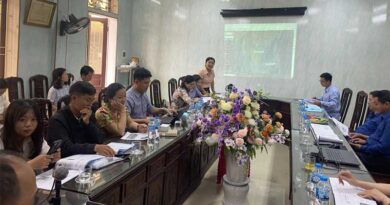
Research Reveals The Genetic Diversity Of Trees In Ethiopia’s ‘Church Forest’
25 October 2025, Ethiopia: Scientists at the University of Copenhagen (UCPH) have shed light on the genetic diversity of three indigenous tree species found in Ethiopian church forests, which could provide a key source of quality tree seed for Ethiopia’s ambitious tree-planting campaign.
On 2 October 2025, a seminar took place in Addis Ababa to present the results of their research to stakeholders. The Center for International Forestry Research and World Agroforestry (CIFOR-ICRAF) – through its Provision of Adequate Tree Seed Portfolios in Ethiopia (PATSPO) project – and Norwegian Church Aid (NCA) initiated and funded the study with the support of the Royal Norwegian Embassy in Addis Ababa.
Because of high population pressure, natural forests have been destroyed in the highlands of Ethiopia. Fortunately, remnants of natural forests can be found around most churches and in monasteries, especially in the central and northern highlands of the country. These church forests are considered sacred groves and have persisted largely because the local community respects and protects the church compounds. Most of these church forests have small areas that range from 2 hectares to 7 hectares.
Owing to their small size, there has been a lot of uncertainty about the genetic diversity of indigenous trees growing in the forests. And many people have asked whether it is right to use the trees in these forests as seed sources because there could be inbreeding among trees that may be closely related. Inbreeding is mating or breeding between related individuals.
If there is inbreeding, the seedlings are weaker and have a high mortality rate, with little chance of surviving to maturity because they have difficulty adapting to the changing environment, according to Soren Moestrup, senior team leader of the PATSPO II project.
“We don’t want that to happen,” he said. “And we want to have some knowledge if there is inbreeding in church forests.”
For the genetic research project, Professor Ole K. Hansen and postdoctoral researcher Kedra M. Ousmael, who previously worked on the PATSPO project and completed her doctorate at the University of Copenhagen, focused on the indigenous trees Afrocarpus gracilior, Juniperus procera and Olea europaea subsp. cuspidata, all of which are found in many church forests in Ethiopia.
With the support of PATSPO stakeholders and staff from Ethiopian Forestry Development, leaf samples were collected from eight church forests across the highlands of Ethiopia. Samples were also collected from 11 nearby breeding seed orchards (BSOs) and natural forests to be used for reference purposes.
Their research question was: How have isolation and small population sizes influenced the genetic diversity and structure of Ethiopian church forests? The study concluded that:
Afrocarpus gracilior is vulnerable and not suitable as a stand-alone seed source. It has low genetic diversity and a small effective population size. There is a high level of inbreeding among the trees. The researchers recommended that seeds be collected and mixed from multiple populations.
On the other hand, Juniperus procera has high genetic diversity. There is low to moderate inbreeding among the trees, which are therefore suitable for both conservation and as seed sources, according to the researchers.
Most populations of Olea europaea also have high genetic diversity. There is moderate inbreeding in some populations, the study concluded. The Olea trees from church forests can serve as seed sources, but it is advisable to collect and mix seed from multiple populations, the scientists said.
📢 If You’re in Agriculture, Make Sure the Right People Hear Your Story.
From product launches to strategic announcements, Global Agriculture offers unmatched visibility across international agri-business markets. Connect with us at pr@global-agriculture.com to explore editorial and advertising opportunities that reach the right audience, worldwide.






